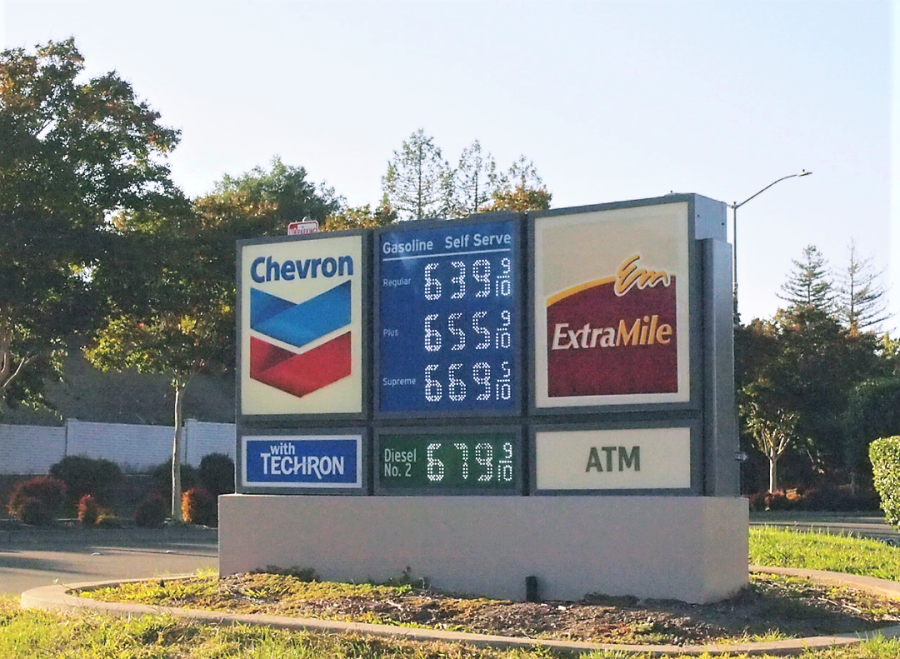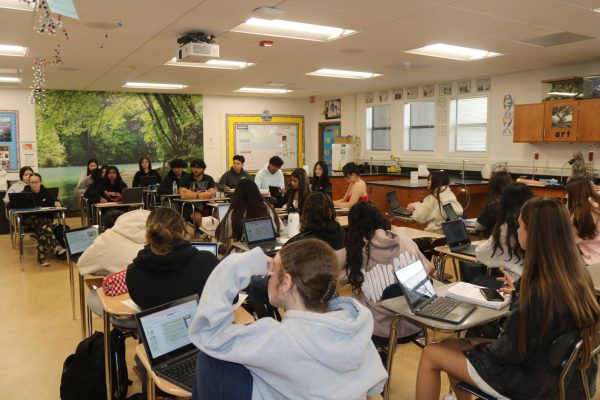How we can fix the inflation problem
Gas prices at the Chevron Station at the intersection of Bollinger Canyon Road and San Ramon Valley Boulevard easily exceeded $6 a gallon in late October. Rising gas prices have created problems for students and teachers.
The phenomenon of inflation raises prices and makes many of our lives miserable.
And it is at its highest rate since the 1970s.
The United States is at a 7.7 percent inflation rate as of Oct. 31, according to the most recent figures released by the Bureau of Labor Statistics.
Solutions suggested by politicians thus far have not worked to lower inflation, and the victims are all Americans.
The economy works through supply and demand. Demand is the want of a product. If more people want to buy goods, there is higher demand. Supply is the amount of a product there is available to purchase.
Inflation can form in two ways: demand-pull inflation and cost-push inflation. Demand-pull inflation occurs when the demand of a product gets too high because there is too much money to spend in the economy, decreasing the value of each dollar spent.
Cost-push inflation occurs when product supply drops too low, leading to a hike in prices and decreasing the value of each dollar spent.
Today, there is a combination of both types of inflation at play. The supply chain crisis – the slowed shipping of products worldwide because of the COVID-19 pandemic – is the reason for the current cost-push inflation.
The current demand-pull inflation is caused by extensive government spending and an expansion of the money supply by the Federal Reserve.
Bureau of Labor Statistics show unadjusted 12-month food prices are up 10.9 percent, while salaries have only grown 3.4 percent. This results in a burden on American families to only buy necessities, making a viable solution to this crisis even more needed.
There are three main solutions to inflation that address different issues of the crisis.
The first solution is to cut and restrain government spending. Government spending increases demand, and if the government spends too much, it can cause inflation because there is too much money in the economy.
Governments spend money to help the economy during a recession. The US government did this in 2020 during the COVID-19 pandemic through stimulus checks, money provided by the federal government to help keep people afloat.
But the problem is the government never stopped spending exorbitant amounts of money even after the economy was starting to recover.
In March of 2021, President Biden signed the American Rescue Plan (ARP), a $1.9 trillion economic package with even more stimulus money. Harvard economist Jason Furman speculated that ARP could have added as much as 4 percentage points to inflation in 2022, nearly half of the current inflation level.
This does not take into account the other massive spending bills that have been passed since, including the $1.2 trillion Infrastructure and Investment and Jobs Act, and $280 billion Chips and Science Act.
The second solution to inflation is ending the gas tax suspensions. While this position isn’t very popular, it’s one supported by economics.
When gas taxes are suspended, there is an incentive for people to spend more money. Tax Foundation federal policy analyst Alex Mureisanu wrote an article on the foundation website stating that reducing or eliminating the gas tax would exacerbate inflation.
A few states have suspended their gas taxes, and President Biden has called for a federal gas tax moratorium that would suspend the 18.4-cents-per-gallon tax for three months.
The final solution to solving the crisis is automating America’s shipping ports to help alleviate the problems from our supply chain crisis since one of the main contributors are inefficient ports.
Our current ports are relying too heavily on manpower instead of technology. Automation would mean faster shipping times, less disruptions and more time consistency.
Global management consulting giant McKinsey and Company estimates that port operating costs could be lowered by up to 55 percent, and productivity could rise by up to 35 percent by increasing automation. Unfortunately, there’s a major hurdle to this solution: longshoreman unions.
In Los Angeles for example, the dock workers union made sure their contract banned the automation of the terminal on the port because it would lead to mass layoffs.
The federal government could easily use their financial power to subsidize the automation of ports, but it is unlikely to happen. According to Reason magazine, the recent $1.2 trillion Infrastructure and Investment and Jobs Act included nearly $17 billion for port infrastructure, but it explicitly forbade the use of said money for automation.
These solutions aren’t going to be ‘the end all be all’ for solving inflation, but it’s much better than what the current president and Congress have been doing.

Senior Ayaan Karan is a reporter for The Californian. He loves writing and hopes to learn new things while at The Californian. His writing interests include...




